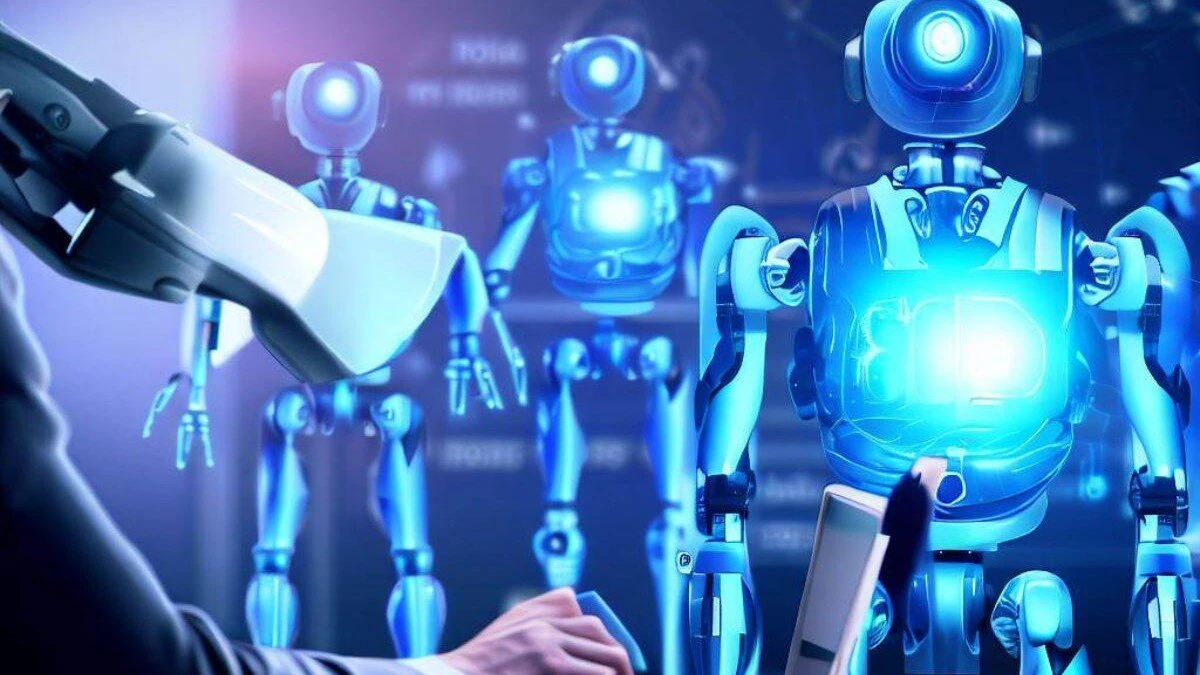This capability is crucial in industries such as manufacturing, logistics, and agriculture, where robots need to operate in complex and unstructured environments with minimal human intervention.
Machine Learning:
Machine learning, a subset of AI, plays a central role in enabling robots to learn from experience and improve their performance over time. By analyzing large volumes of data, including sensor inputs and feedback from human operators, robots can refine their behavior and adapt to new tasks and environments. For example, collaborative robots, or cobots, can learn to work alongside humans on the factory floor, adjusting their movements and actions to optimize efficiency and safety.
Object Recognition and Manipulation:
AI algorithms are also revolutionizing robotic vision and manipulation capabilities. With advanced computer vision techniques, robots can accurately identify and classify objects in their environment, enabling tasks such as pick-and-place operations in warehouses and assembly lines. Furthermore, AI-powered robotic arms can manipulate objects with precision and dexterity, performing delicate tasks that were previously challenging for automation.
Natural Language Processing:
Another area where AI is making significant strides in robotics is natural language processing (NLP). By enabling robots to understand and respond to human commands and queries, NLP opens up new possibilities for human-robot interaction. In customer service, for example, AI-powered robots can assist customers in retail stores or provide information in public spaces, enhancing the overall customer experience.
Predictive Maintenance:
AI is also transforming the field of predictive maintenance in robotics. By analyzing sensor data and historical performance metrics, AI algorithms can predict when robotic systems are likely to fail and proactively schedule maintenance tasks to prevent costly downtime. This proactive approach to maintenance not only improves reliability and uptime but also reduces operational costs for organizations deploying robotic systems.
Swarm Robotics:
Swarm robotics, inspired by the collective behavior of social insects such as ants and bees, leverages AI to coordinate large groups of robots to achieve complex tasks collaboratively. By implementing decentralized control algorithms, swarm robots can exhibit emergent behaviors and self-organize without the need for centralized command and control. Applications of swarm robotics range from search and rescue missions to environmental monitoring and exploration in hazardous environments.
Autonomous Vehicles:
In the field of transportation, AI is driving the development of autonomous vehicles, including self-driving cars, drones, and unmanned aerial vehicles (UAVs). By integrating AI algorithms for perception, planning, and decision-making, autonomous vehicles can navigate roadways and airspace safely and efficiently, with the potential to revolutionize industries such as logistics, delivery, and urban mobility.
Ethical Considerations:
As AI becomes increasingly integrated into robotic systems, it is essential to consider the ethical implications of this technology. Issues such as data privacy, algorithmic bias, and the impact of automation on employment require careful consideration and proactive measures to mitigate potential risks. Additionally, ensuring transparency and accountability in AI-powered robotics is critical to building trust among users and stakeholders.
Conclusion:
In conclusion, artificial intelligence is driving transformative changes in robotics, enabling robots to perform tasks with unprecedented autonomy, intelligence, and efficiency. From autonomous navigation to object recognition and manipulation, AI is expanding the capabilities of robotic systems across diverse industries and applications. As AI continues to evolve, so too will the potential for innovation in robotics, unlocking new possibilities for automation and human-robot collaboration. By harnessing the power of AI, we can create a future where robots work alongside humans to enhance productivity, safety, and quality of life.


